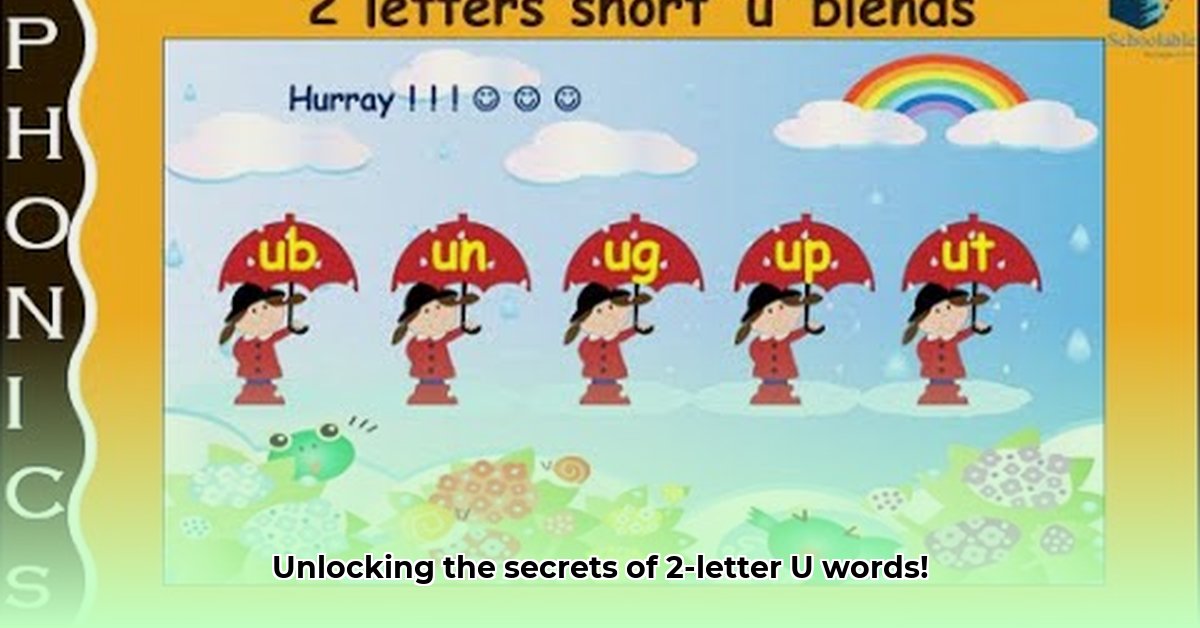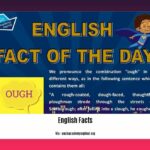Two-letter words, despite their brevity, play a crucial role in English, particularly in word games and informal communication. This guide explores the fascinating landscape of two-letter words containing “U,” addressing their usage, variations, and significance. We’ll delve into the challenges of defining a definitive list, explore the strategic value of these words in games, and examine the impact of regional variations and evolving online norms. For more word games and puzzles, check out this helpful resource: Words Starting With ‘My’.
The Lexical Labyrinth: Defining Two-Letter “U” Words
Establishing a definitive list of two-letter words containing “U” presents a unique challenge. Dictionaries and word lists often diverge due to variations in criteria, historical context, and regional usage. For example, the archaic term “UG” (meaning disgust) appears in some historical lexicons but is absent from modern dictionaries. Similarly, “UR” (informal for “your”) has gained prevalence online but lacks formal recognition. These discrepancies raise questions about the dynamic nature of language and the inclusion criteria for official word lists. Should prevalence in online communication warrant formal inclusion? This very question highlights the ongoing evolution of language.
Core Vocabulary and Contested Cases
A core set of two-letter words containing “U” consistently appears across most sources: “UN,” “UP,” “US,” “UM,” “UH,” and occasionally “UT.” However, beyond this core group, discrepancies emerge. “NU,” “MU,” “OU,” and “XU” appear in some lists, often related to specific contexts like Scrabble dictionaries or technical terminology. The inclusion of such words depends heavily on the specific criteria employed by each lexicon. This necessitates a cautious approach when compiling a comprehensive list, emphasizing the importance of source transparency.
Constructing a Definitive List: A Methodological Approach
Building a truly definitive list requires a rigorous and transparent methodology:
Define the Scope: Clarify the parameters. Will the list include archaic terms, regional variations, or proper nouns like “UT” (Utah)?
Select Authoritative Sources: Choose reputable dictionaries, official word game resources (e.g., Scrabble dictionaries), and linguistic databases. Cross-referencing is essential.
Compile and Analyze: Create a master list, documenting the source for each word and any qualifiers (archaic, regional, proper noun). Analyze discrepancies between sources, understanding their rationale.
Consult Linguistic Experts: Engage with experts to validate findings and address nuanced linguistic considerations.
Document and Maintain Transparency: Clearly document the methodology, sources, and any limitations. This transparency is paramount for establishing credibility.
Strategic Significance in Word Games
Two-letter words are invaluable assets in word games like Scrabble and Words With Friends. Their compact nature allows for strategic placement, maximizing board space and creating scoring opportunities. “UM” and “UP” are frequently among the highest-scoring two-letter words, making them key strategic components for experienced players. Knowing these words can drastically alter your game, enabling defensive blocks and offensive high-point plays.
The Influence of Regional Variations and Online Communication
The acceptability of certain two-letter words containing “U” varies geographically. What’s considered standard in one region might be informal or even obsolete elsewhere. Moreover, the rise of online communication has introduced new forms and abbreviations, further complicating the lexical landscape. The widespread use of “UR” highlights this phenomenon. While common online, it lacks formal acceptance. These evolving norms underscore the dynamic and context-dependent nature of language, constantly shaped by cultural and technological influences.
Beyond the Game: Practical Applications and Further Exploration
The study of two-letter words extends beyond word games. Analyzing usage patterns in diverse contexts—from literature and news articles to social media—provides valuable insights into regional dialects, evolving trends, and the impact of online communication on language. This knowledge informs educational resources, linguistic research, and the ongoing development of language itself. Exploring this seemingly simple domain reveals a complex interplay of linguistic principles, historical context, and evolving communication patterns. This deeper dive unveils the intricacies of how language adapts and evolves over time, driven by both traditional usage and modern communication trends.
- Discover Long Black Pepper: Flavor & Health Benefits - April 25, 2025
- Shocking Twists: The Grownup Review: Unreliable Narration - April 25, 2025
- A Quiet Place Book vs Movie: A Deep Dive - April 25, 2025
















